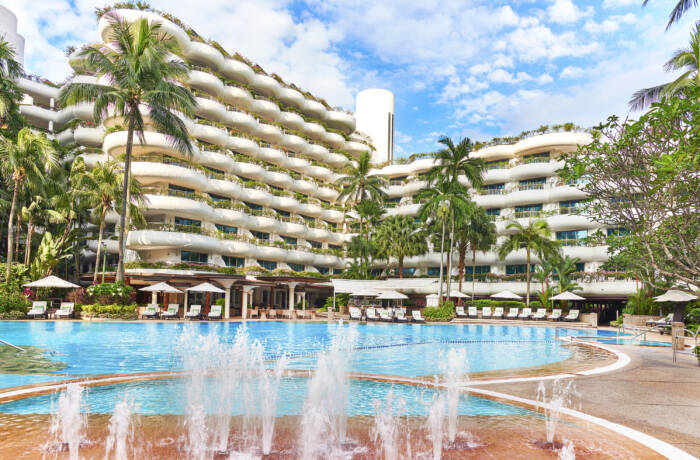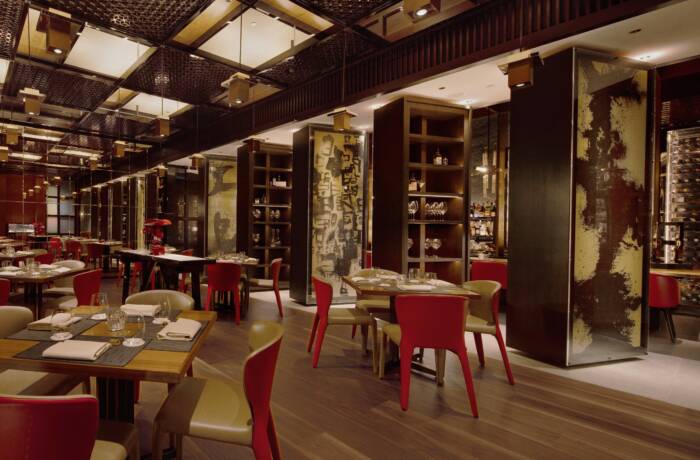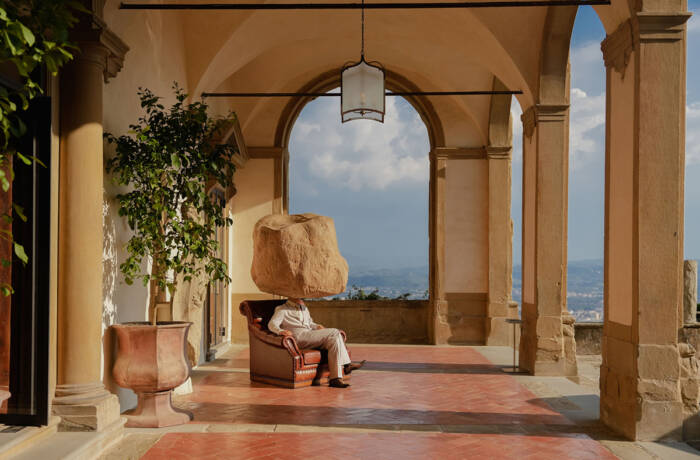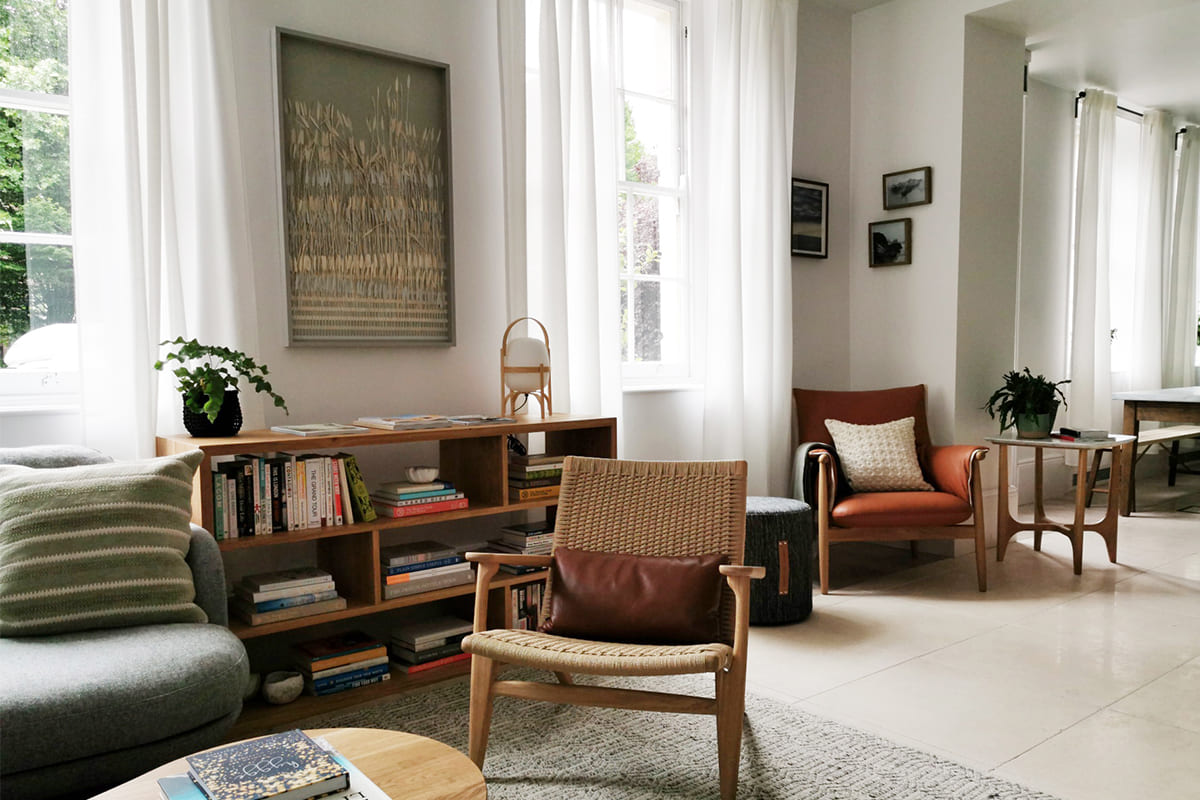
Culture A’s hospitality projects include London’s new wellness hotel Inhabit, which will open this summer. Image courtesy of Inhabit Hotels
Anne T. Rogers is the founder of Amsterdam-based art consultancy Culture A, which curates collections and experiences for a range of clients from hotels to luxury retail and residential. Here, she speaks to Candice Tucker about visual storytelling, AI-generated art and how to curate a collection at home
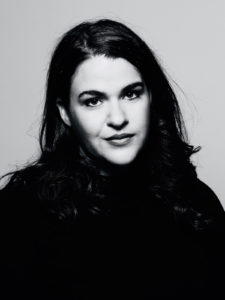
Anne T. Rogers
1. What inspired you to create Culture A?
I’m a trained art historian and experience strategist. After years of working in curating, interior design, and retail design, I saw the opportunity to position art as an experience as well as an investment. I started Culture A to curate and produce art as something that transforms a public space. Art is an important design differentiator, particularly for clients such as hotel owners, property developers, and retail brands. We find the best art suitable for investment, visual storytelling, or pure aesthetics.
Follow LUX on Instagram: luxthemagazine
2. Why do you think there’s been such a dramatic rise in experience culture?
It’s an interesting time where we’re focusing on the benefits of community, but not at the risk of the individual. Self-love, self-care, wellness: these are all hot topics right now. I think the rise of experience culture is tied to this. Generally speaking, we like to be a part of something that feels bigger than ourselves, but also have the space to find our own interpretation and act upon that feeling. Experience culture is about encouraging engagement and acting on it. For me, art is visual storytelling, and visual storytelling is a key component to experience design. Looking at art encourages discussion, individual interpretation, and personal connection. How many other consumer goods spark such freedom of expression?
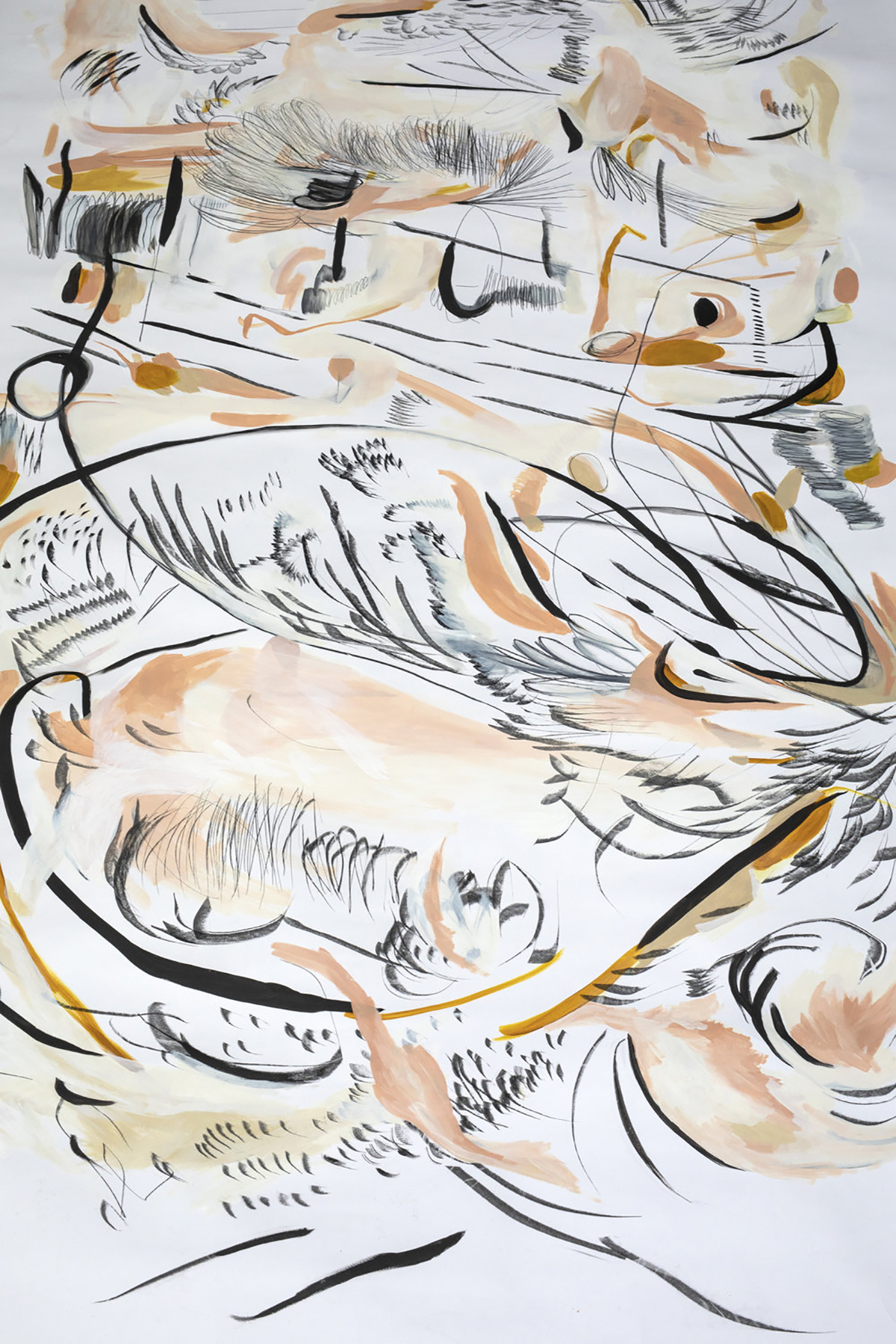
An artwork by Amsterdam-based artist Camille Rousseau for Inhabit London. Image courtesy of Culture A
3. Where does your curation process begin for a hospitality project?
I adopt the mindset of a guest, dig into the brand story, and ask: how can the art experience enhance the customer journey? For hospitality projects, I approach curating through the lens of experience design versus museum design. It allows me to consider diverse audiences and how to best integrate art into the context of a brand. For example, when curating the art collection for Inhabit, a new London hotel focused on wellness, I really wanted to illuminate the brand’s vision for health and wellbeing. To start, we did a deep dive into research around wellness, urban oasis, colour psychology, and nature in London. We then developed curatorial themes in relation to Inhabit’s ethos and sourced our pieces accordingly.
Read more: Alia Al-Senussi on art as a catalyst for change
4. Could you share any tips on how to curate and frame art in your home?
Build a collection slowly and one that reflects your tastes and interests. Frame it professionally to avoid damage and maintain the investment. Don’t ignore key vantage points in your home. Where does the eye instinctively go when you scan the space? Hang art in those areas and study how each work relates to the other in the context of the space. This could be done thematically, by scale, by colour, or a mix of all three.
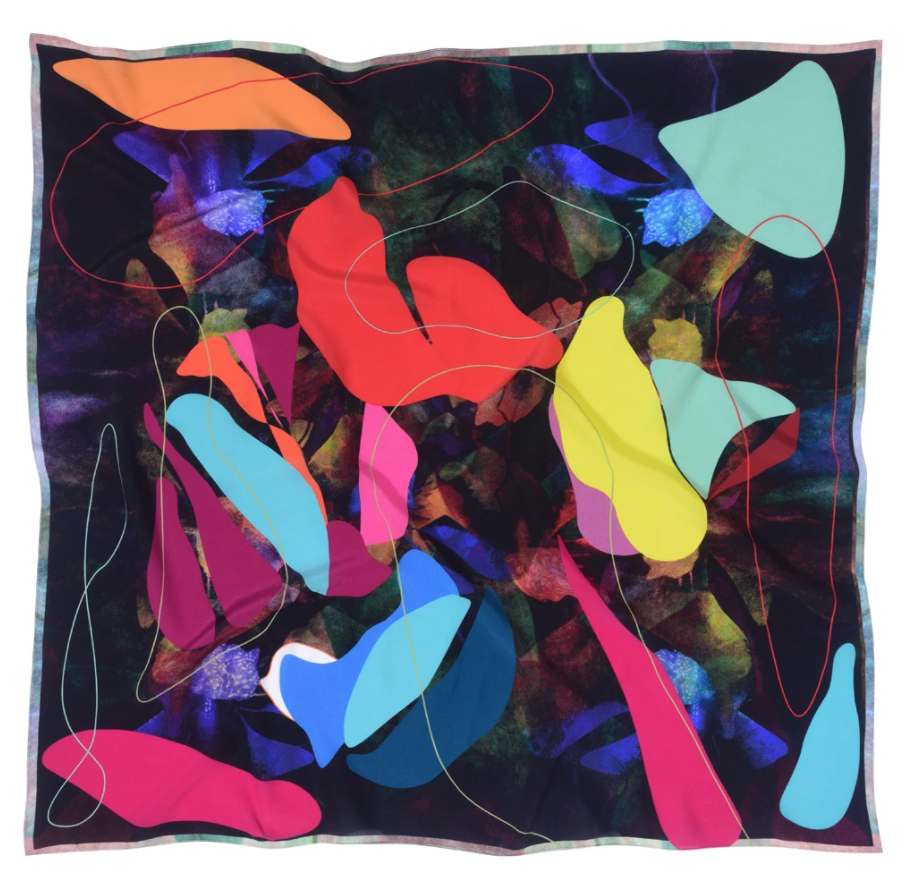
An art scarf designed by designer Lisa King. Image courtesy of Culture A
5. What artistic and design trends do you foresee emerging this year?
A growing demand for slow and considered art and design. People will ask themselves, “What do I really need and what do I really enjoy?” It’s a time to re-configure and refresh the spaces already lived in. As for design presentations and sourcing, virtual viewing rooms are certainly on the rise. I recently completed a project that was largely approved because of how successful the artwork looked in our virtual reality demo. Right now, we’re also experimenting a lot with AI-generated art driven by a brand’s heritage and image archive.
6. Which contemporary artists are you currently keeping your eye on?
Landon Metz, Matt Gagnon, Sarah Crowner, Kapwani Kiwanga, Martine Gutierrez, Miya Ando, Loie Hollowell, Douglas Mandry, Tyler Mitchell, Nicolas Party, Anne Hardy, Hugo McCloud, Emily Kiacz, and Wyatt Khan. Also, anyone working with AI technology to generate art and design.
Find out more: culture-a.com

